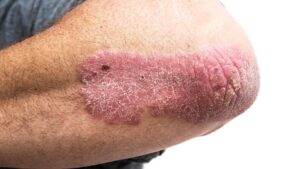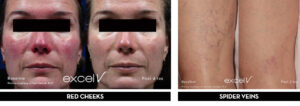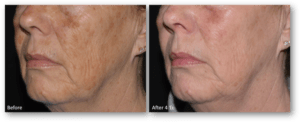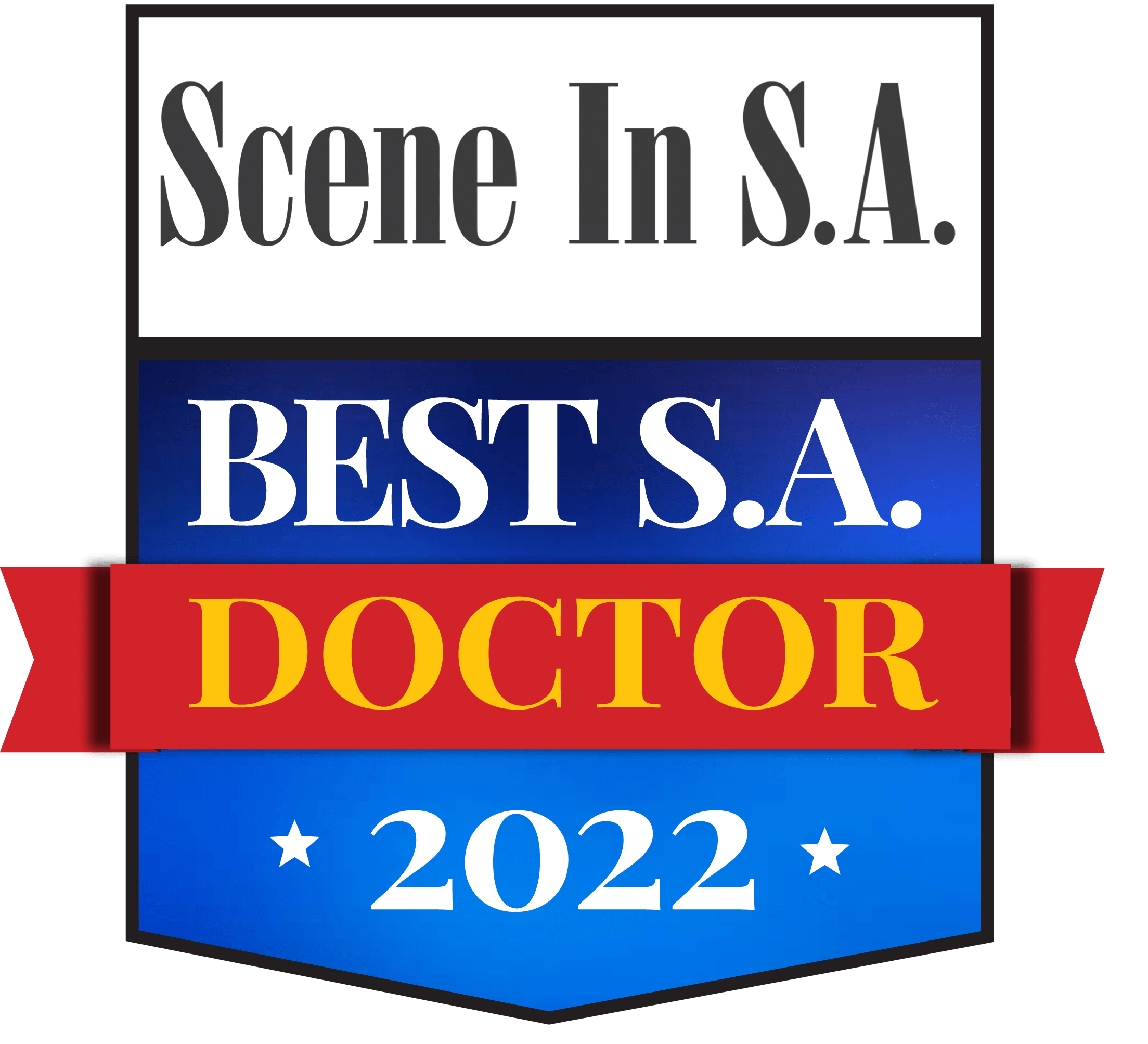
Excel V FAQ
How does Excel V work?
Excel V is a laser system for providing treatment of a variety of vascular skin conditions. Many skin conditions manifest in the form of broken or abnormal blood vessels in the skin. Such is the case with rosacea, in which the facial blood vessels dilate excessively, causing redness and flushing. Excel V treats these conditions by administering a unique high-power green laser that is absorbed by the abnormal blood vessels in the skin. The laser heats the abnormal vessels until they are removed. At the end of treatment, the patient’s natural skin tone and color are restored.
What specific conditions does Excel V treat?
Excel V has been shown effective at treating a number of conditions, including rosacea, telangiectasias, leg veins, port wine stains, and cherry angiomas. Excel V treats mild and severe forms of these conditions. The system may also have a cosmetic benefit for patients who have skin lesions or scars from past injuries or surgeries.
What are the benefits of Excel V compared with other treatment options?
The benefit of Excel V is that the treatment can be highly adjusted to ensure that the level of treatment being delivered specifically matches the patient’s skin condition. The system contains various wavelength modes, allowing the delivery of both short pulses for superficial blemishes, such as small lesions and skin discoloration, and longer pulses for deeper vascular conditions, such as leg veins and nodular port wine stains. It also offers a wide range of laser spot sizes to ensure that small treatment areas can be targeted at greater precision and larger areas can be treated in a shorter period.
This high level of customization is what makes Excel V so effective at treating, often in one session, so many different conditions, which, in the past, would have required several different systems or procedures.
Comparison of Excel V With Alternative Vascular Skin Condition Treatments
Sclerotherapy Surgery Excel V
Are there other laser treatment options available for these skin conditions?
Yes, there are other laser treatment options available for skin conditions. The challenge usually associated with laser treatment is tailoring the treatment to precisely match the patient’s unique skin condition. Some existing lasers may be effective for treating a condition at one size and depth, but may not work effectively on conditions that affect a larger area.
What is the level of demand for treatment of skin conditions?
The prevalence of vascular skin conditions varies greatly. Rosacea is one of the most common conditions, affecting about 14 million Americans. Many people with Rosacea may not even realize they have it even when common symptoms are present such as redness in the face and flushing after consumption of alcohol, caffeine or spicy foods.
Another fairly common condition is cherry angiomas, which are small red bumps that spontaneously appear on the skin. These kind of lesions are commonly found in middle‐aged populations—more than 85% of people over 45 years of age have several cherry angiomas.
Spider veins are also a fairly common condition, although the exact prevalence varies according to different sources. Port wine stains, another condition which Excel V treats, is a more rare condition, occurring in about three out of every 1,000 people. These are a type of birthmark often appearing on the face in which swollen blood vessels cause a reddish‐purplish discoloration of the skin.
Although these conditions represent some of the most common cases for which the Excel V laser system provide treatment, the robust customization of the system makes it ideal for also treating more general cosmetic problems such as superficial blemishes, discoloration and even scars. Given that the large majority of people have one or more of these conditions to varying degrees, almost anyone could potentially benefit from treatment with Excel V.
How is the procedure performed?
After an initial consultation with the patient, we will determine if treatment with the Excel V is appropriate.
Unlike other procedures, injections or topical anesthesia are not required throughout the duration of the 15-30 minute procedure. Depending on the condition, the Excel V hand piece is placed over the affected areas of the skin until the abnormal vessels diminish. To minimize discomfort and protect the patient’s skin, the Excel V uses a proprietary cooling mechanism
What skin types does Excel V treat?
All skin types identified in the Fitzpatrick skin type classification can be treated with the Excel V system. This classification denotes 6 different skin types, ranging from very light (type I) to very dark (type VI). The 532nm wavelength is ideal for treating skin types I-IV and the 1064nm mode can be used on all skin types I-VI.
How many treatments are needed?
The number of sessions depends on various parameters, including the size, thickness and color of the vascular lesion. Superficial vascular lesions such as small telangiectasia and diffused redness are easiest to treat; some patients might see significant improvement after just one treatment.
What are the costs of treatment?
As with any procedure, the costs depend on the specific condition for which treatment is being provided. For minor conditions only requiring a single cycle of treatment, the cost generally ranges between $250‐$1,000. For conditions that affect a large portion of the skin and require additional treatment sessions, the price increases proportionally.
To find out if Excel V is the right treatment for you, schedule a consultation with DeSilva Dermatology.

 Previous Post
Previous Post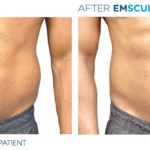 Next Post
Next Post
